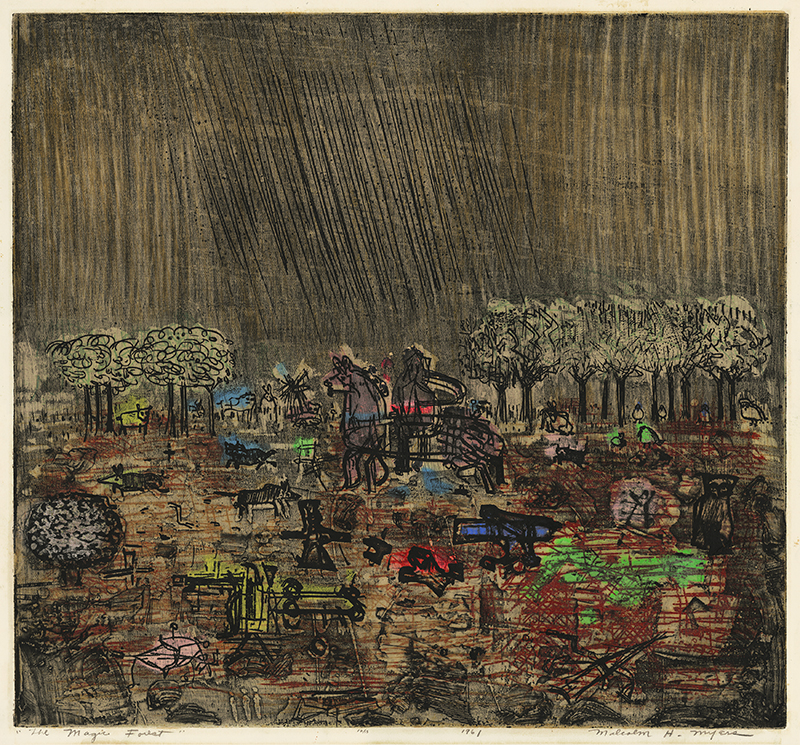|
The Magic Forest, created in 1961 by Malcolm H. Myers, is a mixed technique color intaglio combining line etching, open-bite, soft-ground, color stencil, and gold leaf. It is pencil signed, titled, dated and editioned 10/15. It was printed by the artist on a sturdy cream wove paper and the platemark measures 23-11/16 x 25-13/16 inches. A reference for this image is the University of Minnesota 1996 catalogue “Malcolm H. Myers: Five Decades of Paintings and Prints,” illustrated on page 12. The Magic Forest is emblematic of Myers' most singular decade of self-expression, one in which his evolving techniques and his love of ancient art and artifacts combined in an explosion of energy on the plate. The Magic Forest was created during Myers' period of fascination with the story of Don Quixote; this image may address the scene in which the titular character battles the Knight of the Forest. Malcolm H. Myers, printmaker and painter, was born on 19 June 1917 in the Lucerne, Missouri. He graduated from Wichita State University in 1940 and, along with friend Garnet Cox, traveled to the University of Iowa at Iowa City to enroll in graduate school, receiving a full scholarship the next year. There he studied under with Fletcher Martin and Emil Ganso, and earned his first Master of Fine Arts, in watercolor. After graduation he joined the US Merchant Marines, traveling to Catalina Island, California for training, and was then sent to Officers School in Sheepshead Bay, New York shortly before the war ended. While in New York City, he explored his blossoming love of jazz music, which greatly influenced his work. Meanwhile, Myers married his longtime Kansas sweetheart
Roberta King and after the war they stayed on in New York. He briefly attended
the Art Students League in New York but decided to return to Iowa, where he
met the Argentinean master printmaker Mauricio Lasansky, who was there on a
Guggenheim fellowship. Myers soon worked with Lasansky, earning his second
MFA in printmaking and working as Lasansky's assistant. |



